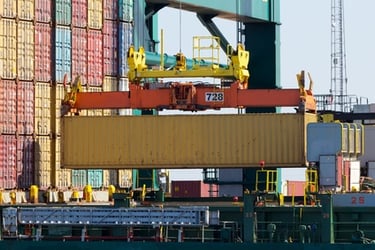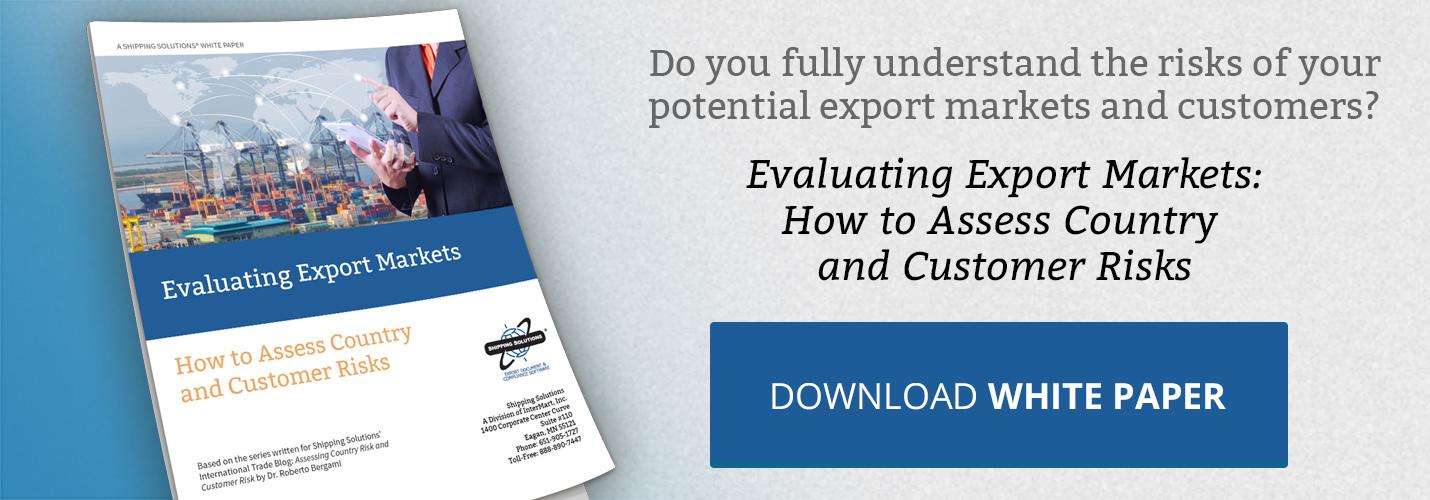The International Trade Blog International Sales & Marketing
Know the Risks of Using a Documentary Collection When Exporting
On: October 1, 2018 | By:  Roy Becker |
3 min. read
Roy Becker |
3 min. read
 A documentary collection works well for many export transactions and provides a measure of security for both importers and exporters.
A documentary collection works well for many export transactions and provides a measure of security for both importers and exporters.
It provides security to buyers since they do not have to pay until they have documents, which provide proof of shipment. It also provides security to sellers since the buyer cannot receive the goods until he pays for them. Therefore, title to the goods remains with the seller until the buyer pays.
It does have risks, however, to both parties, and it can represent a poor method of payment for some transactions as the lesson below illustrates. However, the documentary collection is simple, fast and less costly than a letter of credit.
Simplified Documentary Collection Transaction Flow
The International Trade Administration publication, Trade Finance Guide, provides this seven-step transaction flow of a typical documentary collection transaction:
- The exporter ships the goods to the importer and receives the documents in exchange.
- The exporter presents the documents with instructions for obtaining payment to his or her bank.
- The exporter’s remitting bank sends the documents to the importer’s collecting bank.
- The collecting bank releases the documents to the importer on receipt of payment or acceptance of the draft.
- The importer uses the documents to obtain the goods and to clear them at customs.
- Once the collecting bank receives payment, it forwards the proceeds to the remitting bank.
- The presenting bank then credits the exporter’s account.
(Send me an email to receive a flowchart of how this transaction works.)
To clarify the terminology of the parties involved in the transaction, turn to Article 3 of the ICC Uniform Rules for Collections (URC 522):
For purposes of these Articles the "parties thereto" are:
i. the "principal" who is the party entrusting the handling of a collection to a bank;
ii. the "remitting bank" which is the bank to which the principal has entrusted the handling of the collection;
iii. the "collecting bank" which is any bank, other than the remitting bank, involved in processing the collection;
iv. the "presenting bank" which is the collecting bank making presentation to the drawee.
Seeds Get Shipped to Belgium; Buyer Refuses Payment
A U.S. company shipped seeds to Belgium. The company presented documents to the buyer through banking channels on a sight draft, which constitutes a formal demand for payment. For whatever reason, the buyer refused to make payment and take up the documents. The goods went into storage while the exporter tried to find another buyer.
By the time the exporter found another buyer, moisture had seeped into the container and the seeds began germinating. The exporter hastily found another buyer and accepted 10 cents on the dollar.
When buyers become unable or unwilling to pay, exporters have four options:
- Renegotiate with the buyer to try to induce them to make payment.
- Request that the goods be returned and absorb associated shipping costs.
- Find another buyer in the same region, if possible, to avoid costly shipping expenses.
- Dispose of the goods if the cost of the other options is too great.
Since buyers do not have to pay like they would in a letter of credit transaction, these options become less viable when the goods contain perishable items, as in this lesson; time-sensitive goods; or custom-made goods. In these instances, exporters should avoid this payment method.
This article was first published in November 2015 and has been updated to include current information, links and formatting.

About the Author: Roy Becker
Roy Becker was President of Roy Becker Seminars based in Centennial, Colorado. His company specialized in educating companies how to mitigate the financial risk of importing and exporting. Previous to starting the training company, Roy had over 30 years experience working in the international departments of several banks where he assisted many importers and exporters with the intricate banking needs associated with international trade.
Roy served as adjunct faculty in the International MBA programs at the University of Denver and University of Colorado in Denver. He conducted seminars at the World Trade Center Denver and The Center for Financial Training Western States, and was a guest lecturer at several Denver area Universities.
Roy retired in 2021.




